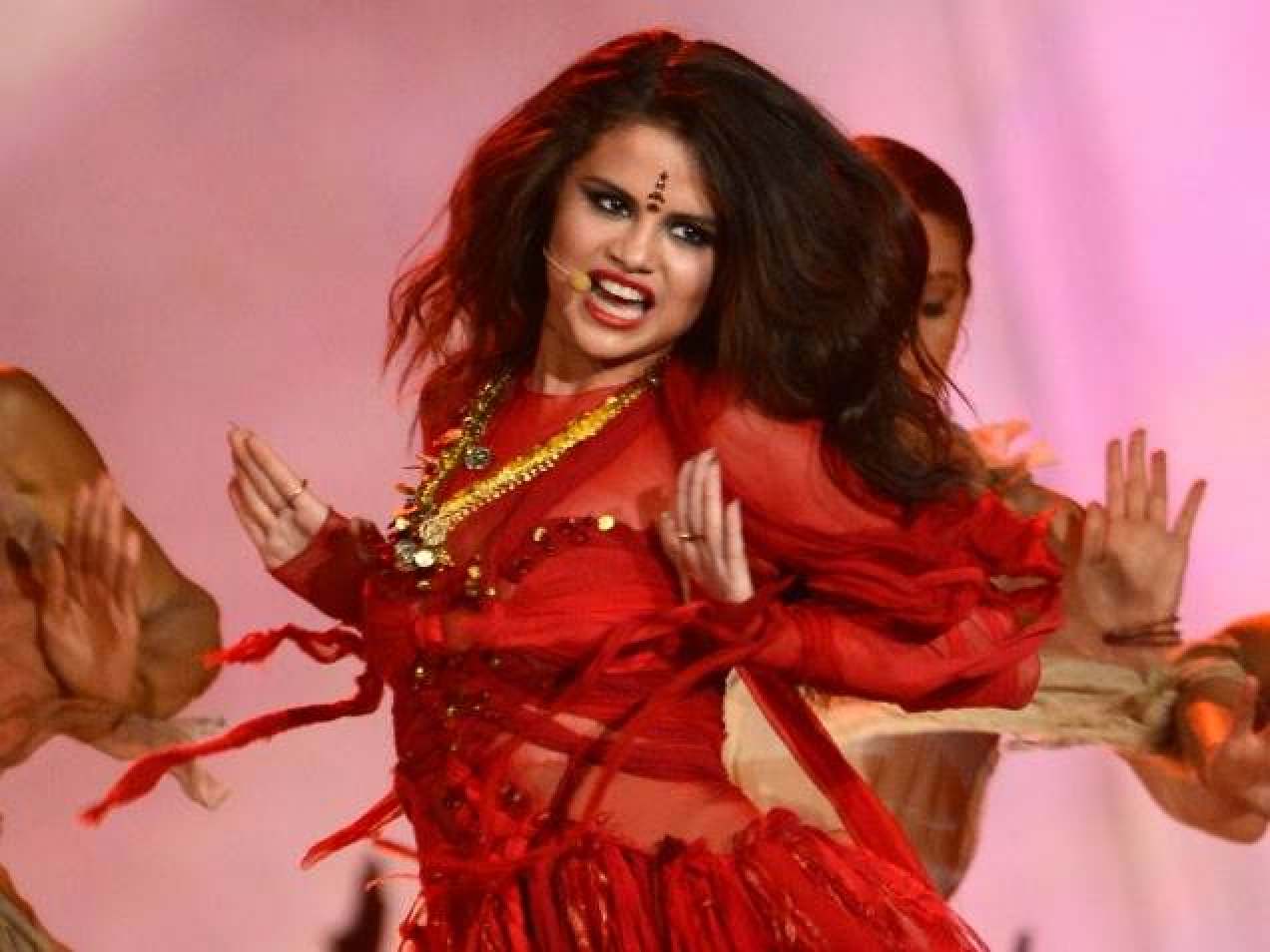
How the bindi, dot on forehead of Indian women, became a fashion accessory for K-pop idols and other stars, and the young women reclaiming it as retro chic
- The practice of wearing a bindi is described in ancient Hindu texts, and can be used to determine a woman’s region, religion, community and marital status
- For many Indian women today, the bindi is an occasional fashion accessory, but young urban women have made wearing it cool again
The bindi is worn by everyone from Indian village women to Bollywood stars and international celebrities. It is both a fashion statement and a religious, cultural, and political symbol.
Placed in the middle of the forehead, it can be anything from a demure red dot to a jewelled ornament, and conveys a wealth of information about its wearer.
The word bindi comes from the Sanskrit word bindu or drop, and it denotes a woman’s mystic third eye. According to yoga experts, this mid-forehead point is the ajna chakra, the sixth and most powerful chakra in the body. Pressing on this point is said to conserve energy and increase concentration.
In the past, the materials used to make bindis included sandalwood ash, sandalwood paste, and turmeric-based kumkum (a type of powder). Observers could determine a Hindu woman’s region, religion, community and marital status from her forehead alone. Widows, in the past, could not wear bindis.
Multi-coloured liquid kumkum for bindis emerged in the 1970s. In the late ’80s, Shilpa, a brand owned by Gujarat-based Paramount Cosmetics, made the first sticker bindis – and women across India fell in love with their easy application.
The sticker bindi began a revolution of beautifully decorated bindis, manufactured by talented artisans using inexpensive machinery.
The single red dot had been replaced by a multitude of glamorous colours and shapes.

Richa Kapoor, a Chennai-based fashion designer, sports a bindi when she wears a sari or traditional clothing. “I use it in my fashion shows to add an ethnic statement look to my models too,” she says.
Bollywood actresses such as Rekha, Vidya Balan, Bipasha Basu and Anushka Sharma have been spotted with oversized bindis. Sharanya Manivannan, 35, a Chennai-based writer who always sports a large bindi, says it can be a political statement.
“I was forced to wear a pottu [bindi] as a child, and growing up in Malaysia and attending international schools there meant that it became a subject of ridicule,” she says. “I remember a white classmate nicknaming me ‘headgear’ when I was around 12 because of it.


“For me, the bindi is a political statement, too. In racially charged Malaysia, I began using it as a statement of cultural identity, wearing it on stage, even with leopard print boots or strappy blouses,” Mannivannan adds.
“I also had another association with it as a political object: I am Sri Lankan Tamil, and I had heard about how my grandmother’s sisters had wiped off their [vermilion] bindis as they fled during the [anti-Tamil] riots of 1983 to hide their Tamilness.
“The image that formed in my head, of what a poignant and loaded thing a bindi is, became quite powerful.”

The bindi has, over time, been appropriated by other cultures. At the 2013 MTV Awards, US pop star Selena Gomez flaunted a bindi and was criticised for it. Other international celebrities like Katy Perry, Lady Gaga and Madonna have faced a backlash for their use of the bindi.
South Korean singer Jennie Kim from K-pop band Blackpink ruffled feathers when she wore a bindi paired with a top from Marine Serre in 2018.
“No culture is a costume, and no cultural marker should be used without reflection,” Manivannan says. “When contemplating any accessory that has distinct cultural connotations, it’s important that the wearer ask themselves: ‘What does this express for me beyond being cute or eye-catching, and am I diminishing someone else in any way by wearing it?’”


Hindu leader Rajan Zed was also concerned about Gomez’s bindi. “It is a religious and spiritual symbol, and is not meant to be thrown around loosely for seductive effects or as a fashion accessory aiming at mercantile greed,” he said at the time.
Ordinary sticker bindis cost between 2 rupees and 15 rupees (US$0.03 to US$0.20) for a pack, while replica pearl, diamond-studded or enamel-encrusted bindis are anywhere between 50 rupees and 75 rupees for a pack. Bindis made with semi-precious stones or that are gold-plated are priced between 500 rupees and 2,000 rupees.
Brand strategist and author Ambi Parameswaran says that through the ’70s, married Indian women were portrayed in the media as wearing a mangalsutra (a type of necklace), sari and a bindi. That has changed.
Researching the representation of women in advertisements for his 2014 book, For God’s Sake: An Adman on the Business of Religion, Parameswaran examined commercials from 1987, 1997 and 2007. Almost 75 per cent of Indian women in the 1997 ads wore a bindi, and fewer than 30 per cent did in 2007.
“Nowadays, many educated working women don’t wear the bindi unless it’s a wedding or a special occasion,” Parameswaran says. “We also see less of the bindi because urban women are not wearing traditional clothes on a regular basis.”

For many young Indian women today, the bindi is more of a fashion accessory than a symbol of marital status or religion. “I don’t wear them for their traditional or religious connotations like my mother,” says Shruti Krishnan, an engineer in Bangalore. “I wear them because I like them as an accessory when I wear Indian clothes.”
Rathina Sankari, a Pune-based writer, finds them an essential part of certain outfits. “The Indian look is complete only with a bindi,” she says. “It is an essential aspect of shringaar [decoration/adornment] for Indian women.
“As a child, elders in the family would insist I wore it with all kinds of attire. But today, I wear it only with traditional Indian wear or Indo-Western outfits.”

